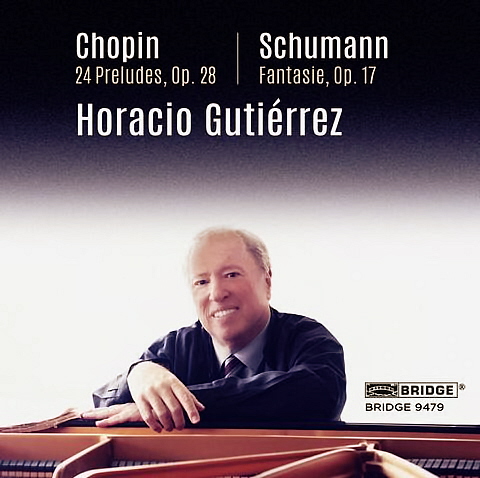
MILLÖCKER: Gräfin Dubarry: Wie schön ist alles; Mein Weg führt immer mich. LORTZING: Zar und Zimmermann: Leb’ wohl, mein flandrische Mädchen+. Undine: Vater, Mutter, Schwestern, Bruder#. Die Waffenschmied: Man wird ja einmal nur geboren. NICOLAI: Die Lustigen Weiber von Windsor: Horch, die Lerche singt im Hein. LEHÁR: Schön ist die Welt: Schön ist die Welt. J. STRAUSS: Ein Nacht in Venedig: Treu sein, das liegt mir nicht; Sei mir gegrüßt, du holdes Venezia. FALL: Die Rose von Stambul: Zwei Augen, die wollen mir nicht; O rose von Stambul. KUNNEKE: Die Lockende Flamme: Ich traüme mit offenen Augen. Die Größe Sünderlin: Das Lied vom Leben des Schrenk. STOLZ: Ich Liebe alle Frauen: Ob blond, ob braun, ich liebe alle Frau’n*. SPOLIANSKY: Heute Nacht oder Nie*. MATTES: Melodia con passione% / Fritz Wunderlich, tenor; Munich Radio Orchestra; Hans Moltkau, +Kurt Eichhorn, #Meinhard von Zellinger, *Siegfried Kohler, %Willy Mattes, conductors / BR Klassik 900314
This must be the 16th time these recordings have been reissued, though not specifically in this order. All are radio recordings of comic opera and operetta arias by Wunderlich with the Munich Radio Orchestra, most of them conducted by the virtually unknown Hans Moltkau. For those of you who are part of the Wunderlich cult—and, sadly, it has become a cult—you probably already have them elsewhere in your collection. After all, he made a finite number of recordings, and only a handful of live opera performances have come to light since his death in 1966, so there are very few surprises to unearth.
Perhaps this might be as good a time and place as any to explain to people too young to remember exactly how the Wunderlich legend got started in the first place. Through most of his short life, he was largely known to American and British opera-lovers as a very fine, sweet-toned young tenor on Karl Böhm’s recordings of Mozart’s Die Zauberflöte and Die Entführung, Karl Richter’s version of the Bach Christmas Oratorio, Otto Klemperer’s recording of Das Lied von der Erde and a handful of “Große Querschnitt” or “Greater Highlights” of light German operas and operettas featuring the young tenor. He was scheduled to make his Metropolitan Opera debut in the fall of 1966 as Don Ottavio in Don Giovanni, but he had the misfortune to get drunk at a stag party, accidentally tie his shoelaces together at the top of a staircase, and died a week shy of his 36th birthday.
If you scan the list of recordings mentioned above, you will notice that there were little or no Italian operas or arias in his repertoire, and the few that were he sang in German rather than Italian. This marginalized him to some extent from the Italian opera lovers who had already gravitated to another sweet-voiced light tenor, Nicolai Gedda, in his performances of more standard repertoire at the Met. Thus when EMI’s budget label, Seraphim, began issuing recital LPs about a year after his death, there were a lot of “mainstream”opera lovers who liked his voice but didn’t particularly enojy hearing arias from La Bohème, Madama Butterfly, Rigoletto, La Traviata and Don Giovanni sung in German, and a lot of the other material—Lortzing, Cornelius, Nicolai, and all the old-time operetta composers—only held a small interest for them.
Yet the sweet timbre, effortless high range and—most importntly for non-Teutons—the lack of guttural qualities in Wunderlich’s German diction all eventually grew on people, and by the mid-1970s this now-long-dead tenor was one of the most beloved singers in the world. This, of course, led to virtually everything he ever made being reissued, including some lieder recordings, like Schubert’s Die Schöne Müllerin, for which he had the proper voice but absolutely no interpretive skills. But none of this mattered. To many opera lovers, the sound of a beloved voice is enough to make them want to hear more of that voice regardlesss of artistic quality.
This smorgasbord of Munich radio performances include many of those operetta and comic opera numbers that most listeners have come to realize was, aside from Mozart, Wunderlich’s best material. These recordings of Wie schön ist alles, Leb’ wohl, mein flandrische Mädchen, Schön ist die Welt, O rose von Stambul and Ob blond, ob braun, ich liebe alle Frau’n are among his most beloved recordings and strong evidence of the qualities that made him so beloved in the late 1960s. Wunderlich may have lacked subtlety of expression much of the time (but not always: recently discovered recordings of him singing Strauss’ Ständchen and Ich trage meine Minne, Wolf’s Storchenbotschaft and other lieder with Hubert Giesen have proved to be surprisingly good), but except for the very end when heavy drinking seemed to impair his breath control in live performances, he maintained a clean line and had wonderful rhythmic acuity.
I should also mention Wunderlich’s rare excursions into Baroque repertoire, such as Buxtehude’s Wachet auf, ruft und die Stimme and Bach’s Christmas Oratorio, the latter with Karl Richter conducting, which also indicate a different dimension to his singing provided that it was in German. What we have here, then, is an artist frozen in time and place. He did not grow very much as an artist during his lifetime, he might or might not have developed had he lived, but the aural snapshots of Fritz Wunderlich continue to fascinate listeners because the voice was so beautiful and he fortunately lived during the stereo era.
—© 2016 Lynn René Bayley


 Cruz-Romo brings the same intelligence, sensibility and depth of feeling to the much lesser-known aria “Tu puiniscumi, O signore” from Luisa Miller. I’ve heard numerous Met broadcasts of this opera without Cruz-Romo, and it never sounds this good. Never. In the Forza excerpts, one can hear the almost wild, Gypsy-like quality she could bring to certain roles, particularly in “Madre, pietosa vergine,” the most intense performance I’ve heard this side of Maria Caniglia. This could be from the complete performance conducted by Muti with Franco Bonisolli and Cesare Siepi, as the musical style is taut and no-nonsense. “Pace, mio Dio” is sung with that unique combination of musicality, perfect voice placement and passion that was her trademark.
Cruz-Romo brings the same intelligence, sensibility and depth of feeling to the much lesser-known aria “Tu puiniscumi, O signore” from Luisa Miller. I’ve heard numerous Met broadcasts of this opera without Cruz-Romo, and it never sounds this good. Never. In the Forza excerpts, one can hear the almost wild, Gypsy-like quality she could bring to certain roles, particularly in “Madre, pietosa vergine,” the most intense performance I’ve heard this side of Maria Caniglia. This could be from the complete performance conducted by Muti with Franco Bonisolli and Cesare Siepi, as the musical style is taut and no-nonsense. “Pace, mio Dio” is sung with that unique combination of musicality, perfect voice placement and passion that was her trademark. technically sing the role, and sing it well, I find it hard to hear a real Lady Macbeth with her “hard, dark, stifled voice” as Verdi specified, in Cruz-Romo’s singing. Her timbre was just too pretty for the music, despite a very fine and rather dramatic reading.
technically sing the role, and sing it well, I find it hard to hear a real Lady Macbeth with her “hard, dark, stifled voice” as Verdi specified, in Cruz-Romo’s singing. Her timbre was just too pretty for the music, despite a very fine and rather dramatic reading.

 exaggerating a little…it “only” sold THREE MILLION copies) was the one he begged the record company (English Columbia) to leave his name off of: Richard Addinsell’s schlocky Warsaw Concerto from the blockbuster film Dangerous Moonlight. Was he wise to do so? Perhaps we should look at the fate of poor Iturbi, who lent his name and face to a dozen or more Hollywood films and thus saw his reputation as a serious artist go down the toilet.
exaggerating a little…it “only” sold THREE MILLION copies) was the one he begged the record company (English Columbia) to leave his name off of: Richard Addinsell’s schlocky Warsaw Concerto from the blockbuster film Dangerous Moonlight. Was he wise to do so? Perhaps we should look at the fate of poor Iturbi, who lent his name and face to a dozen or more Hollywood films and thus saw his reputation as a serious artist go down the toilet.




 an instrument called the Udu which sounds amazingly like the woodblocks and cowbell of a standard drum kit. Looking it up online, I found out that I was right to a point. The Udu is essentially a “percussion pot” with a hole in the side that comes from the Igbo people of Nigeria (see photo). It is played by quickly tapping or hitting the hole in the side while the player’s other hand manipulates the hole in the top. Crazy, man!
an instrument called the Udu which sounds amazingly like the woodblocks and cowbell of a standard drum kit. Looking it up online, I found out that I was right to a point. The Udu is essentially a “percussion pot” with a hole in the side that comes from the Igbo people of Nigeria (see photo). It is played by quickly tapping or hitting the hole in the side while the player’s other hand manipulates the hole in the top. Crazy, man!